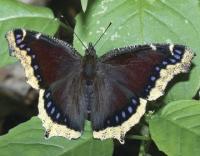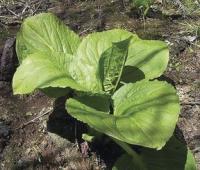
Serving the Vermont Champlain Valley Area for 45 Years
Main SectionsFront Page SportsValley VitalsIt's in the StarsStarwiseArchivesLinksAbout The VoiceContact Us |
Impatient For Spring? Sharing Signs Of The Season From Vermont Naturalist Ronald RoodTuesday April 12, 2011 By Cookie Steponaitis Just yesterday a flurry of white iridescent flakes danced down onto the Vermont landscape and a groan of protest could be heard from the towns, villages and citizens of the Green Mountain State. Enough already, time for spring! And so time it is. While we are impatiently waiting for signs of the coming of green, Vermont is busy giving us a sneak peak for those who know where to look and what to look for. For most Vermonters over the age of forty-five another sure sign of spring were the visits to the local schools and articles in Vermont Life of Vermont by naturalist Ronald Rood. Originally born in Torrington, Connecticut in 1920, this naturalist and author moved with his wife Peggy to Lincoln, Vermont in 1953, where they raised their four children and where Ron directed the choir for over twenty-five years. It seemed to many Vermonters that Ron also directed the seasons in his thirty books including Loon in My Bathtub (1964), Animals Nobody Loves (1971) and How do you Spank a Porcupine? (1997), in which Rood takes readers into the seasons of Vermont through the eyes of nature. In addition to teaching about the animals and the natural world of Vermont, Ronald Rood enchanted his readers with insights into nature that came from careful observation and a pure joy that living in harmony with Vermont’s changing seasons brings. “For nearly two hours the barkside banquet continued,” wrote Rood in 1968. “Then the sun moved, abandoning the tree trunk to strike the thermometer, which soared to the mid forties. With the coming of share to cool their home, the flies slipped back into winter. And the chickadees returned to the bird-feeder. Such little tastes of spring make it hard to say, really when spring actually does begin. The calendar gives one date. The ground hog and his shadow foretell another. Countless little clues like a bunch of flies that can not wait showcase an impatient spring waiting to bloom.” For those seeking nature’s early warning signs, Ronald Rood suggests you look to the skunk cabbage as another sign. “Sometime in winter,” writes Rood, “a hidden impulse triggers the skunk cabbage into life. Nothing can be seen yet, but the roots, buried more than a foot under the soil, begin to convert their stored food into energy. When this plant appears above the surface it will let you know it is there, for its name simply means, “the plant that smells.” Other early risers from winter’s grasp according to the Vermont naturalist include spiders that creep over the surface of the snow, brown caterpillars called from their slumber, crane flies walking on long legs, gnats, brown miller moths, and even a rare sighting of a Mourning Cloak, which is a butterfly wearing the colors of red, brown and blue. Encouraged by the signs of spring around you, go deeper into the woods Rood says and see the appearance of the skunks that, “…just can’t sleep any longer anyways, and the raccoon that often wakes to meet spring in advance.” As you watch you should also listen and realize that spring has its own sounds as well as sights. The sound of Goldenrod Galls can be heard and even in the wind the Chickadee bursts forth with a message, “…it seems to say: spring…soon.” These sounds hide the well ordered plan for spring and masks activities that include the whistle of the Saw-Whet Owl, the lone whistle of a wolf and the tiny bird called an Elf that is starting its nest and family early. “There are dozens – hundreds- of other little signs telling us that, even while it looks as if we’re in another ice age, Winter is really being pushed aside by Spring,” wrote Ronald Rood in Vermont Life Magazine in 1968. And while many of us may hold out for the tell tale daffodil or even a dandelion, nature is already sending us the beautiful signs of spring. With a swirl of color and a flash of silver, Speckled Brook Trout usher in the season and assure us that nature has made provision for yet another rebirth of Vermont’s special green. If you are enchanted by the words of Ronald Rood, his nature guide Ron Rood's Vermont: A Nature Guide (1988) continues to be one of the most comprehensive and user friendly available to novice and expert alike. Take the advice of this reporter and take a journey into Ronald Rood’s world, for through his words, drawings and descriptions, the world of Vermont comes alive in its entire hesitant splendor. As the March winds give way to the mud season of spring and the sugar houses continue long into the night, know that Vermont is indeed in change. It is signaling what is to come, not quickly enough for the most impatient of us Vermonters, but it is on its way.
|
AdvertisementsSearch our Archives |
Agricultural Weather Forecast:

© 2006-18 The Valley Voice • 656 Exchange St., Middlebury, VT 05753 • 802-388-6366 • 802-388-6368 (fax)
Valleywides: [email protected] • Classifieds: [email protected] • Info: [email protected]



 Printer Friendly
Printer Friendly